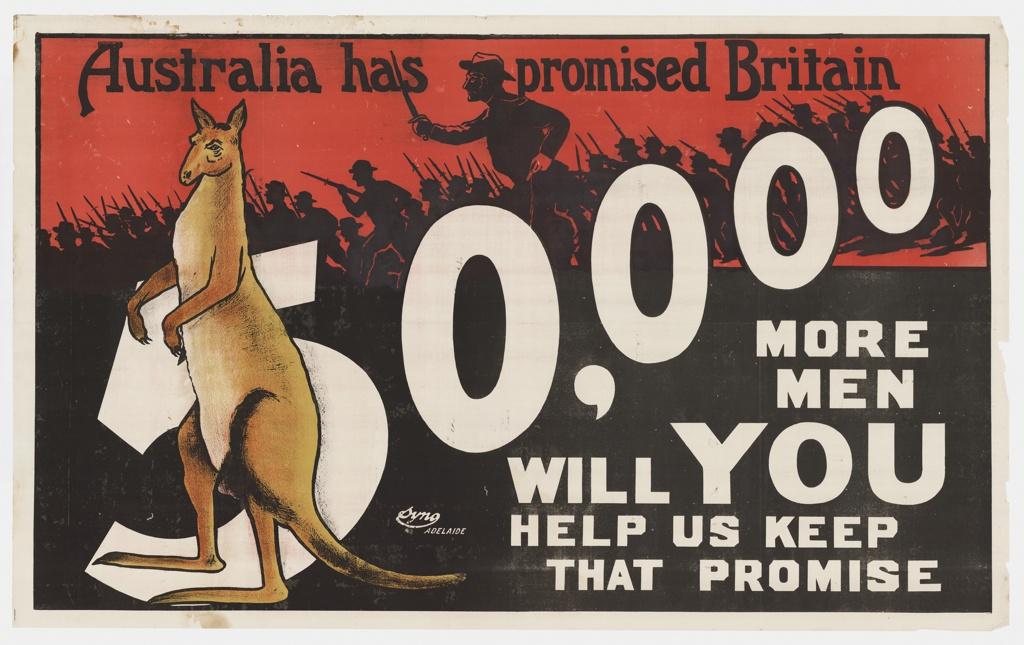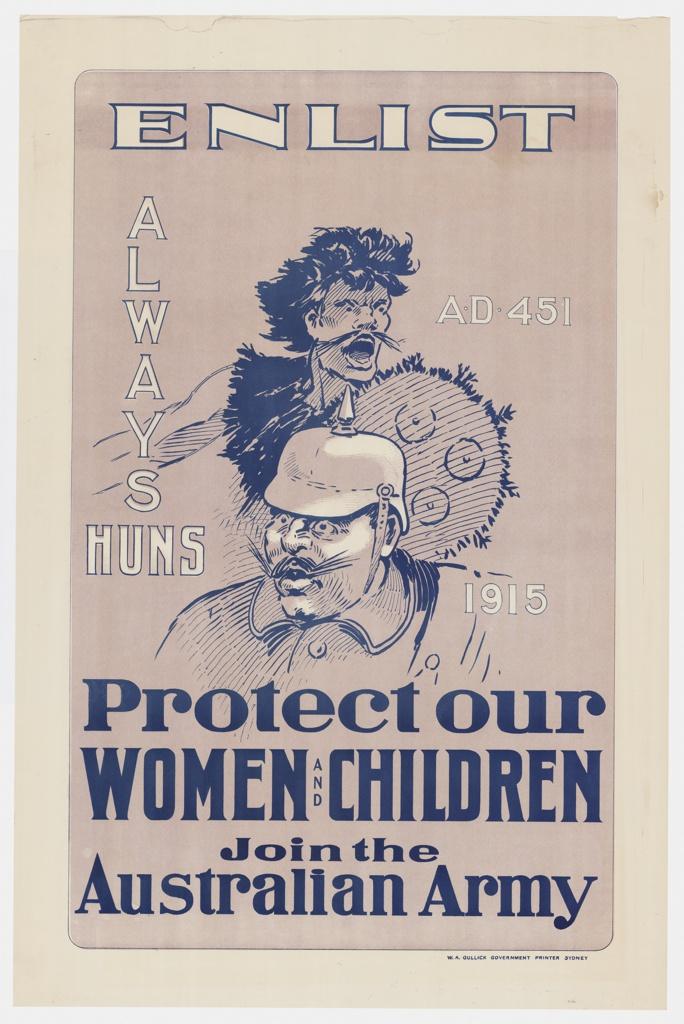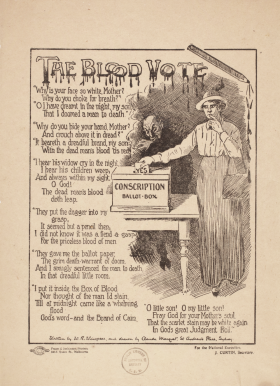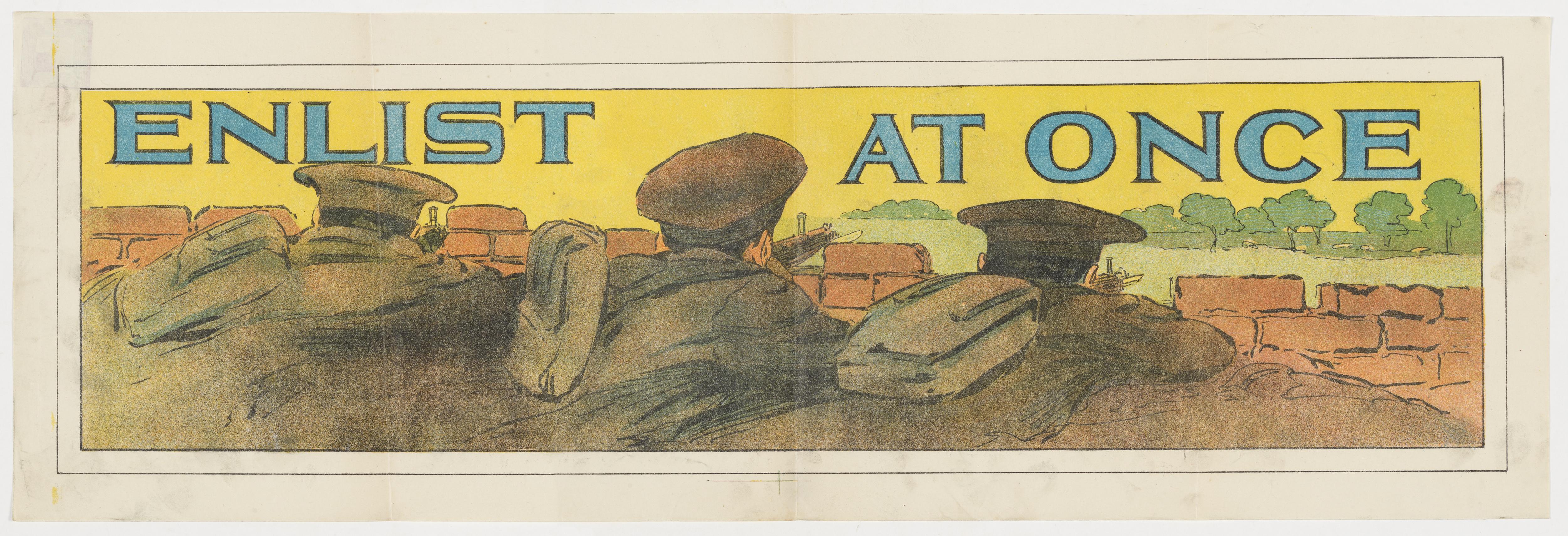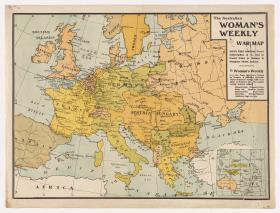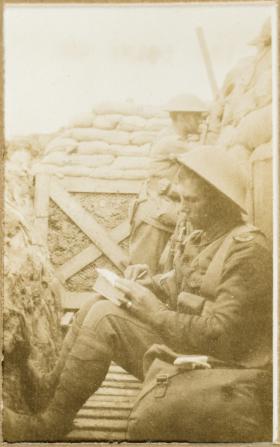During 1916 and 1917, two bitter and divisive referenda were conducted on this issue.
Compulsory military service had been part of Australian life before the declaration of war in 1914. Shortly after Federation, the Defence Acts of 1903 and 1904 provided that men between 18 and 60 should be liable for service in time of war, but limited the obligation to service within the Commonwealth and Commonwealth territories. In 1910, Lord Kitchener’s report on Commonwealth defence recommended the introduction of compulsory military training and this was introduced in January 1911. (This was later abolished by the Scullin Labor government in 1929).
Australian troops fighting overseas in World War I enlisted voluntarily. In the early stages of the war, voluntary enlistment provided enough men to support Australian efforts. However, as the enormity of Australian casualties on the Western Front became known in Australia and as no quick end to the war seemed likely, the number of men volunteering fell steadily. Australians began to realize that this war was not going to be a short and glorious affair.
There was sustained British pressure on the Australian Government to ensure that its divisions were not depleted: in 1916 it was argued that Australia needed to provide reinforcements of 5500 men per month to maintain its forces overseas at operational level. With advertising campaigns not achieving recruiting targets, Prime Minister William Hughes decided to ask the people in a referendum if they would agree to a proposal requiring men undergoing compulsory training to serve overseas.
The issue stimulated bitter and divisive argument within Australian society. Divisions, some based on fault lines already present in the new Federation, arose in political parties, between labor and employers and often ran along religious lines.
The campaign to establish conscription for overseas service began, supported by various bodies such as the Universal Service League and many politicians including Labor leader and later Prime Minister, William Morris Hughes. Politically, the movement had broad implications as the mood of many Australians, particularly those associated with the labor movement and unions, were opposed to conscription and even to Australian support for the battle with Germany. Archbishop Daniel Mannix of Melbourne, a leader for many Irish Catholics and often seen as a Labor supporter, and anti-British, was opposed to the notion of conscription for overseas service.
On 31 August, Prime Minister William Morris Hughes announced that the question of compulsory overseas service would be put to the people in a referendum.
Are you in favour of the Government having, in this grave emergency, the same compulsory powers over citizens in regard to requiring their military service, for the term of this War, outside the Commonwealth, as it now has in regard to military service within the Commonwealth?
The referendum was held on 28 October 1916 and resulted in 1 087 557 votes for and 1 160 033 against. New South Wales, Queensland and South Australia voted ‘No’.
The political ramifications of the defeat for conscription for overseas service went to the heart of Parliament. William “Billy’ Hughes, expelled from the Labor party, in November 1916, was followed by 23 others, to form the United Labor Party. With the support of the then Opposition he formed a new ministry, and in the general elections of 5 May 1917 the new Nationalist Party (a merger of National Labor and the Liberals) was victorious.
In early 1917, Great Britain sought a sixth division to support the planned operations in Europe. On 20th December 1917 a modified proposal was submitted to Australian voters. The plan was to conscript for overseas service only enough men to make up a total of 7 000 men a month.
Hughes’ new proposal was that voluntary enlistment should continue, but that any shortfall would be met by compulsory reinforcements of single men, widowers, and divorcees without dependents between 20 and 44 years, who would be called up by ballot. The referendum asked;
Are you in favour of the proposal of the Commonwealth Government for reinforcing the Commonwealth Forces overseas?'
The campaign was bitter, and arguments again split communities across the Federation. Posters such the famous Blood Vote poster, organized by J. Curtin, himself set to be a wartime Prime Minister, were widely circulated in the Labor press and The Catholic Weekly.
The proposal was again rejected, by a larger majority than before; voting being 1 015 159 in favour and 1 181 747 against. Victoria now also voted against conscription for overseas duty.
Voting was not compulsory until 1925, but the poll was greater than in any previous referenda, a sign of the passion and interest in the proposal. Of the electors enrolled, 82.7 % voted in 1916 and 81.3% in 1917.
Perhaps most poignantly, and in a reflection of the thoughtfulness of the front line troops, conscription for overseas service was rejected by the men in the war zones. Reasons given included ‘nobody should be made to come to this’, ‘every man should be able to make up his own mind’ and ‘if they have to be forced to come they won’t be much good over here’.
The conscription referenda were divisive politically, socially and within religious circles. Newspapers and magazines of the time demonstrate the concerns, arguments, and the passion of Australians in debating this issue. The decisive defeat of the second referendum closed the issue of conscription for the remainder of the war.
Steve Martin, Researcher and Author

